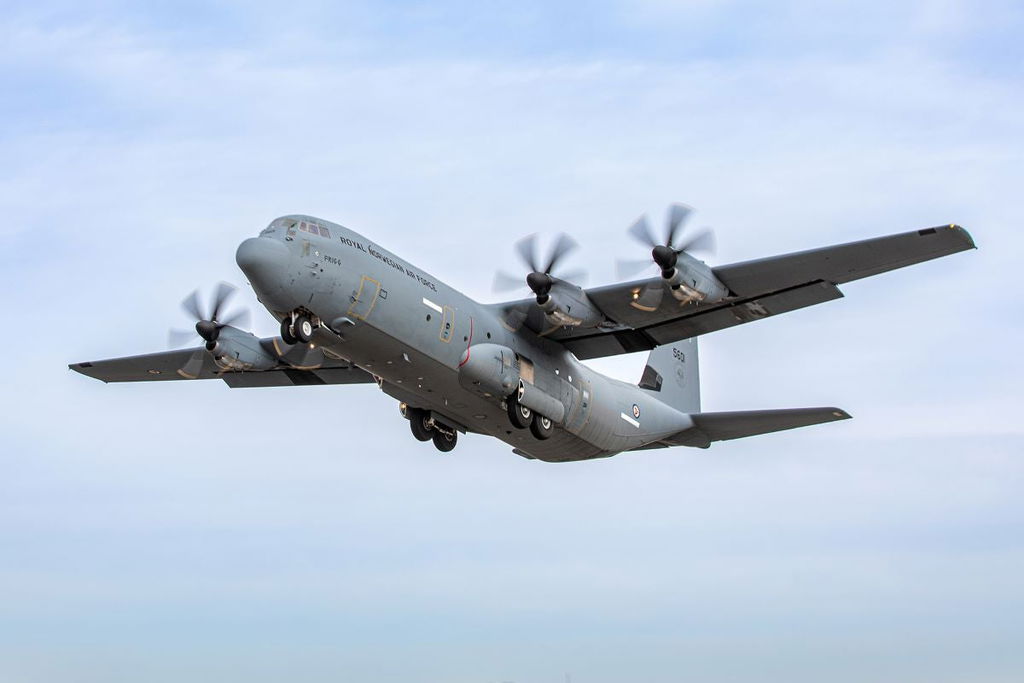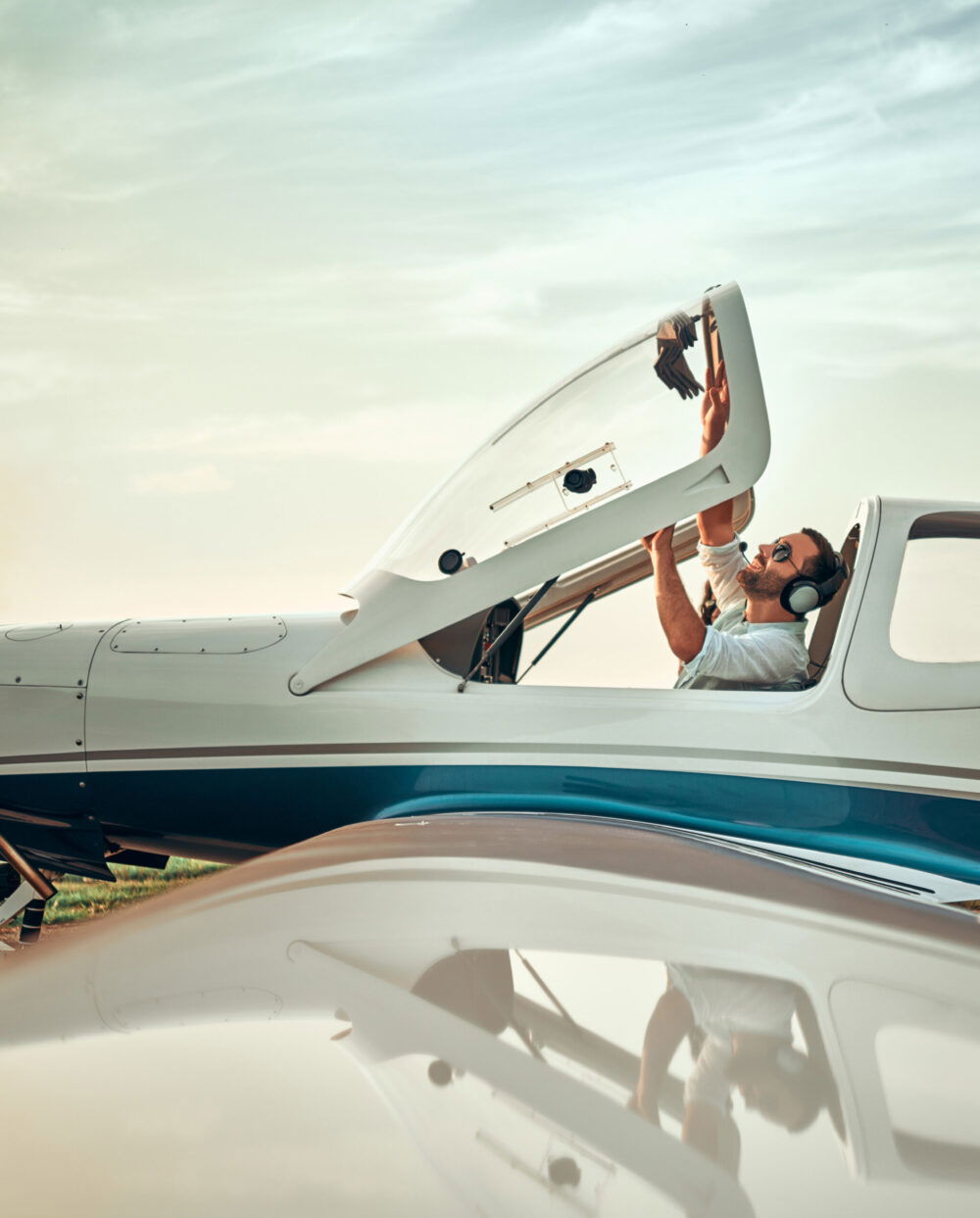Former FAA Administrator Mike Whitaker in September reiterated a long-standing agency commitment: Two pilots must always be on the flight deck during routine commercial flight operations.
But that hasn’t stopped companies from developing technology designed to reduce or even eliminate crews—and airlines and pilots are divided on whether that will compromise safety.
If you're not already a subscriber, what are you waiting for? Subscribe today to get the issue as soon as it is released in either Print or Digital formats.
Subscribe NowAutonomous drones are already flying and have delivered hundreds of thousands of items. But the FAA is working closely with two firms building systems to enable reduced crew operations (RCO), single-pilot operations (SPO), and—if the technology advances enough—crewless flight for a wide range of aircraft: Boston-based Merlin Labs and Mountain View, California-based Reliable Robotics.
At least one major U.S. airline told FLYING it sees a “clear path” to SPO or fully autonomous airline operations. But the Air Line Pilots Association (ALPA), which represents nearly 80,000 members flying for 42 airlines, rejects that idea.
- READ MORE: Beard Safety for Airline Pilots Supported in New Study
“There is no safety substitution for two well-trained pilots on the flight deck,” said Captain Jason Ambrosi, president of ALPA. “Technology is an invaluable tool to our industry, but when it fails, it’s pilots, not programs, that prevent tragedies and save lives.”
How It Works
Most commercial passenger airliners already incorporate some degree of automation, such as autopilot or automatic dependent surveillance-broadcast (ADS-B). The FAA has processes to approve those systems and has created regulations for small uncrewed aircraft systems (sUAS), such as drones.
The next step, which it is working to achieve with Merlin and Reliable, is modifying and expanding those rules to allow deliveries of larger cargo—or even people.
“Having two sets of eyes and hands in the flight deck has long been foundational to safety,” said Tim Burns, chief technology officer of Merlin. “The human brain’s unparalleled ability to assess and interpret complex situations, and also make critical judgments, remains the cornerstone of safe flight operations, especially when hundreds of lives are at stake with each and every flight.”
At the same time, though, the firm believes that combining the strengths of human pilots and automation presents an “opportunity to further improve flight safety.”
“Every aircraft should have a ‘Land Now’ button,” said Robert Rose, co-founder and CEO of Reliable.
Rose said the architecture of Reliable’s remotely piloted system is “similar to what you would see on large commercial aircraft.” Three flight computers manage the flight controls and aircraft state. Below them, four more computers “vote” on decisions made by the main three computers. A further two computers handle communications and plan flight paths.
“These three layers work together to fly the aircraft, detect faults, and perform actions to mitigate faults and keep the aircraft in a safe configuration,” Rose said.
Merlin describes its Merlin Pilot as an advanced autopilot that “enables the aircraft to fly from takeoff to touchdown along a preplanned trajectory.” Unlike Reliable’s system, in which remote pilots communicate with air traffic control (ATC), Merlin Pilot’s natural language processing (NLP) is designed to listen and even “speak” to controllers. It understands commands in a range of accents and voice types and recommends inputs for the pilot to give to the autopilot. A human PIC retains control over the system during flight.
“We see a future where pilots and automation form a more advanced and robust partnership—extending human capability with technology that does more and responds more accurately and quickly,” Burns said.
Crawl, Walk, Fly
Both Merlin and Reliable describe their systems as “aircraft agnostic,” meaning they can plug into a variety of designs. Merlin, for instance, is working with the Air Force to reduce crews on its C-130J Hercules and KC-135 Stratotanker. The Department of Defense (DOD), meanwhile, has approved testing of Reliable’s modified Cessna 208B Grand Caravan. Rose predicts the firm’s first FAA supplemental type certificate (STC) will cover that model.

“This aircraft is a very popular cargo hauler, with hundreds being used on a daily basis in the United States,” Rose said. “These will be our first operations.”
The FAA has already accepted the certification basis, means of compliance, and certification plans for Reliable’s continuous autopilot engagement system. The company in 2023 completed an FAA-sanctioned uncrewed cargo flight and is working with the regulator to test its systems according to an approved plan.
Rose said the firm expects to receive an STC for the Caravan “very soon,” but the process will likely extend into 2026. It will need to certify to the same design assurance level as any other aircraft.
“If you’re trying to certify an airplane, you can’t say, ‘This aircraft will only carry cargo, only fly over unpopulated areas, and never cross any major roads or highways, therefore, it should be certified to a lower standard,’” Rose said. “The right way to approach this problem is to just follow the full-blown process, and the result of that hard work will be an aircraft system that can be used in all of the places you’ll want to use it, without weird limitations.”
Merlin is taking a similar approach. In September, it began a test campaign it believes will culminate in an STC, also for the Caravan. At first, it will automate small aircraft with reduced crews. But the ultimate goal is to shrink crews on larger models—and eliminate them entirely on small planes.
“We’re taking deliberate, methodical steps that incrementally build the capability of emerging technologies, all while remaining grounded in proven safety practices,” Burns said.
Not Everybody Agrees
Rose predicted cargo airlines will be the first adopters of autonomy. But the company aims to adapt its STC to other aircraft types. Passenger operators, he said, will likely be the first to push for reduced crew operations supported by remote pilots on the ground.
Stephen Snyder, managing director of operations and partnerships for JetBlue Ventures, the airline’s investment arm, said crewless flight is possible if the public gets on board. Snyder cited that as the reason for JetBlue’s investment in Beacon AI, a developer of AI copilots.
“The aviation industry has already successfully transitioned from four-person flight crews to two, and we see a clear path toward single-pilot or fully autonomous operations with the right technology,” Snyder said.
Rose said RCO or SPO operations can “definitely” be as safe as having two pilots on the flight deck, and Merlin went as far as saying the technology could enable the safest generation of flight yet. But ALPA believes reduced crews sacrifice safety for airline profits.
“While technology will continue to evolve, it will never serve as a replacement of experienced pilots and their uniquely human capabilities,” Ambrosi said.
For example, extended minimum-crew operations (eMCO)—which are being studied by the European Union Aviation Safety Agency (EASA)—could allow airlines to skirt maximum flight time regulations for pilots by extending in-flight rest periods, ALPA has argued. One pilot would remain at the controls, with automation filling in for a second resting outside the flight deck.
ALPA has called Airbus’ plan to introduce eMCO a “gamble with safety.” Further, the union’s data shows that RCO, SPO, and remotely piloted aircraft are unpopular. Per a 2024 pulse survey of the flying public, nearly 8 in 10 respondents said remotely operated planes would make them feel less safe, compared to 11 percent who said they would feel safer. Seventy-three percent said they would never feel comfortable flying with fewer than two pilots on the flight deck.
In a 2019 white paper, ALPA cited more than a decade of research by NASA and the FAA that raises concerns with RCO and SPO. For example, NASA simulations show that a single pilot would face significantly higher demand—particularly in off-nominal circumstances
—without a second onboard pilot monitoring, even with a remote pilot assisting. Those tests also showed a rise in task shedding and pilot error.
Other NASA simulations found that pilots encounter more confusion about their responsibilities when communicating via audio. And if an automated system is reliable enough, pilots may become complacent, losing critical skills as they fade into disuse. The white paper further argues that automated systems cannot account for certain contingencies, such as a medical emergency or equipment malfunction that would require two pilots to fix.
Autonomous systems must be able to respond to deviations in the flight plan, which according to ALPA happens on one out of every 10 flights. That could pose a concern if the technology is operating based on a predetermined flight path. A 2017 NASA and FAA study concluded that SPO creates “unacceptable reduced safety margins” in emergency situations compared to operations with two pilots.
“To truly replace the second pilot in the cockpit, machines will need to replicate the sensing, assessing, reacting, adapting, and interacting capabilities of a human in a complex and dynamic environment,” ALPA researchers wrote. “This level of automation is decades away from becoming reality.”
The union claims that airlines may not even get the benefits they are expecting from reducing crews. According to ALPA, the savings from RCO or SPO would be offset by the cost of retrofitting aircraft, building ground infrastructure, paying salaries and benefits to remote pilots, and certification.
Fortunately for ALPA, others agree. Per a 2018 Ipsos poll conducted on behalf of the union, just 8 percent of the public said investment in aviation should go toward RCO or SPO. The rest would prioritize spending on fuel efficiency, ATC, engine technology, and other areas.
This feature first appeared in the April Issue 957 of the FLYING print edition.





